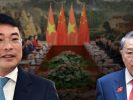
On February 12, 2022, the White House issued the US Indo-Pacific Strategy (IPS). This is the first report to be issued regarding US strategy in the Indo-Pacific region since President Joe Biden took office last January.
Release date
This strategy was announced at a rather special time:
First, this Strategy was announced by the US right while Secretary of State Antony Blinken was in the Pacific region to meet with diplomats from Japan, South Korea, Pacific island nations, and some other governments to attract international attention while the Winter Olympics were taking place in Beijing.
Second, the declaration of this Strategy comes after China and Russia announced on February 4 their „unlimited“ strategic partnership, their most detailed and assertive statement to jointly working together – and against the United States – to build a new international order based on their own understandings of human rights and democracy.
Third, the declaration of the Strategy also comes at a time when the Ukraine crisis is at its height, the US and the West are concerned that Russia will attack Ukraine, and many other countries are worried about the American commitments as well as the strength of the US and its allies after the US abandoned Afghanistan and now Ukraine.
Although in a statement by a senior Biden administration official (who remained anonymous), asserted: “I want to take a minute to talk about why we are releasing this strategy and how it is different as such, and how does it compare to other strategies in the past.”
For some time, leaders of both political parties, and certainly on Capitol Hill, have recognized the growing importance of the Indo-Pacific. This strategy is part of that tradition and builds on the work of previous administrations and, in my opinion, a broader consensus has emerged on the importance of the Indo-Pacific region.“
The senior administration official also told reporters that Secretary of State Antony Blinken’s trips to Australia, Fiji, and Hawaii this week showed the United States recognized the importance of a „long-term engagement“ with the region – even if it faces a more serious crisis, that is, Russia could invade Ukraine.
“The United States is not qualified to focus on only one area or issue at a time,” the official stressed. Russia’s threats to invade Ukraine – and Europe’s continued reliance on the US as a guarantor of security – have disrupted the Biden administration’s efforts to focus more attention and resources into the Indo-Pacific.”
Thus, with the issuance of IPS after the above three events, it shows that the US seems to want to reassure and affirm to allies and partners that the US will focus on the Indo-Pacific region, not the Indo-Pacific region. undistracted by other events, and China will be America’s key adversary in the world.
The main contents of IPS
IPS begins with a quote from US President Joe Biden’s speech at the 2021 East Asia Summit (EAS): “We envision an open, connected, prosperous Indo-Pacific region. prosperous, resilient, and secure – and we stand ready to work with you to achieve this.” While noting challenges ranging from the competition with China to climate change issues in the aftermath of the COVID-19 pandemic, the strategy also emphasizes its plan to expand engagement and foster innovative links with countries in the region: “At its heart is sustainable and innovative cooperation with allies, partners and institutions in the region and beyond.”
IPS includes five important contents:
First, IPS clarifies what is expected from other countries: “a free and open Indo-Pacific requires governments to be able to make their own choices and common areas must be legally managed.” It emphasizes fiscal transparency; ensures international law in the management of the sky and sea; and promotes common approaches to important and emerging technologies, the Internet, and cyberspace.
Second, IPS states that the goals can only be achieved by building collective capacity in a new age and for this, it emphasizes the need to deepen with the five coalition alliances. regional conventions including Australia, Japan, Korea, the Philippines, and Thailand; and strengthen ties with leading partners in the region namely India, Indonesia, Malaysia, Mongolia, New Zealand, Singapore, Taiwan, Vietnam, and Pacific island nations. In addition, the strategy also indicates a determination to empower unified ASEAN, strengthen the „Quad“ to deliver on its commitments, and continue to support India’s rise and leadership.
Third, linking American prosperity to the Indo-Pacific region, emphasizes the need for flexible, secure, diversified, open, and predictable supply chains and building infrastructure through the initiative “Building a Better World” with partners in the Group of countries with the most developed economies in the world (G7).
Fourth, to strengthen the security of the Indo-Pacific, IPS emphasizes the need to use all the tools of power to deter aggression and resist coercion. This includes enhancing cooperation and promoting interoperability with allies and partners, maintaining peace and stability in the Taiwan Strait, enhancing deterrence and expanded coordination with South Korea and Japan, pursuing the complete denuclearization of the Korean Peninsula and continuing to fulfill AUKUS‘ commitments.
Fifth, IPS emphasizes building the region’s resilience to natural disasters, resource scarcity, internal conflicts, and governance challenges.
In essence, there are two notable aspects:
First, IPS emphasizes building alliances and strengthening partnerships to underpin US efforts to strengthen security cooperation in response to growing challenges in the Indo Ocean-Pacific.
Second, the main objective of the strategy is not to change China’s polity but to shape the environment in which it operates. The strategy seeks cooperation with countries in the region, rather than forcing a choice between the US and China. This could make smaller nations reluctant to take sides in the US-China conflict. The United States aspires to maintain a strategic balance in the region in order to counter any nation’s hegemonic efforts and manage strategic rivalries responsibly. Importantly, IPS emphasizes „partners and allies“ rather than „China and democracy.“ IPS also reiterated its commitment to promote the rule of law in the region.
Like the Trump-era Indo-Pacific framework, Biden’s strategy places a strong emphasis on working together with US allies and partners in the region, especially the Quad – which includes the US, India, Japan, and Australia. „Our collective efforts over the next decade will determine whether the People’s Republic of China succeeds in transforming the rules and norms to the benefit of the Indo-Pacific and the world.”
What should Vietnam do?
This is the time for Vietnam to play a more active role in the Indo-Pacific region. Some of Vietnam’s worries have been made clear by IPS. Firstly, Vietnam is afraid of being forced to choose a side between the US and China, the US position is clearly shown in IPS that it does not force countries to choose aside. Second, Vietnam also chooses the „Four Nos“ strategy to avoid getting caught up in tensions when it comes to military alliances. But the White House has shown that IPS is not just about military alliances, but also about promoting commonwealth among nations here. IPS reiterated that the US plans to launch the Indo-Pacific Economic Framework in early 2022, an initiative that the Biden administration hopes will at least partially fill in a large gap in its commitment to the region since former President Donald Trump abandoned the multilateral trade framework in 2017.
The US government said in the IPS that it would expand the Coast Guard presence and cooperation in Southeast and South Asia, as well as in the Pacific Islands, and focus on “advising, training, deployment and capacity building” for these forces. This is also an opportunity for Vietnam to modernize and improve the capabilities of its Coast Guard to counter threats from China’s „gray zone“ tactics.
Therefore, this is an opportunity for Vietnam to change and make a breakthrough if it knows how to take advantage of the opportunities brought from this IPS.
Thoibao.de (Translated)
Millions of THANKS!
Millions of people have watched our news and programs. More and more people choose to support us. Because there is an urgent need for an independent, critical voice in the media for Vietnam.
Your support will help everyone to have free access to thoibao.de. Because we consider the press not only a communication product but also a beneficial activity for the community.
There have been tens of millions of people every month who do not have to pay any money to read news on thoibao.de, but as you know, we have to invest a lot in order to have quality journalism. That’s why we need your support.
You can send your support as follow
1/ Via Paypal, Visa, Mastercard, America Experess, Sepa Lastschrift:
2/ Via bank transfer:
Account name: Thoibao.de
IBAN: DE36 1005 0000 0190 636319
SWIFT: BELADEBE
Address: Berliner Sparkasse, Ostseestr. 109, 10409 Berlin, Germany
When sponsoring or transferring money, please write the words: Support thoibao.de
Thank you very much
Le Trung Khoa – editor-in-chief
Email: [email protected]
Viber/WhatsApp/Telegram/Signal: +49 170 2363084




























